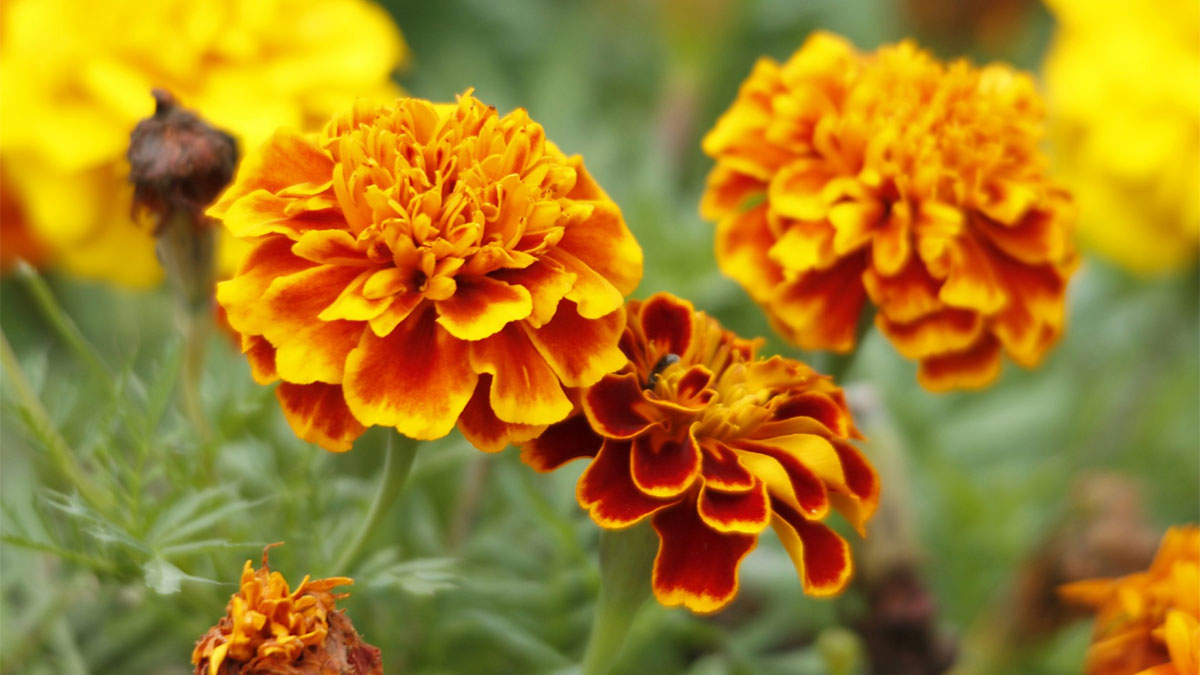The Surprising Benefits of Planting Marigolds in Your Vegetable Garden

Marigolds do more than brighten up a garden, they can actually help your vegetables thrive. With their bold blooms and surprising benefits, these cheerful flowers are a smart addition to any edible garden. From pest control to pollinator support, discover how marigolds can be both beautiful and practical.
1. Natural pest control
Marigolds are well-known for their ability to deter common garden pests, making them a valuable companion in any vegetable plot. Their strong scent confuses insects like aphids, whiteflies, and even certain beetles that would otherwise damage crops. French marigolds, in particular, are effective against nematodes in the soil, reducing infestations that harm root vegetables and tomatoes.
2. Pollinator attraction
While marigolds are great at keeping pests away, they also play a positive role by attracting pollinators like bees and butterflies. These insects are essential for the production of many vegetables, especially those that require pollination to bear fruit. Planting marigolds alongside crops like zucchini or cucumbers can help increase yield by supporting natural pollination.
3. Soil health support
Marigolds improve soil health by naturally reducing harmful nematodes, which can damage plant roots and stunt vegetable growth. They also contribute organic matter as they break down, supporting a more balanced soil environment. Incorporating marigolds into crop rotation can offer ongoing benefits for root health and nutrient availability.
4. Visual appeal and garden structure
The bright orange, yellow, and red blooms of marigolds bring visual warmth and structure to the garden. Their compact growth habit makes them ideal as edging plants, offering a neat border around rows of leafy greens or herbs. In raised beds or containers, they provide a cheerful contrast to vegetables, enhancing both beauty and organization.
5. Easy care and fast growth
Marigolds are among the easiest flowers to grow, making them perfect for gardeners of all experience levels. They germinate quickly from seed and thrive in a variety of soil types, provided they have good drainage and full sun. Once established, they require minimal attention and bloom reliably through the summer months.
Best practices for planting marigolds with vegetables
For the best results, plant marigolds close to your vegetables but leave enough space for airflow and growth. Space them about 6 to 12 inches apart depending on the variety, and choose French marigolds for pest control or African marigolds for larger blooms. Start seeds indoors a few weeks before your last frost or sow them directly outdoors once the soil warms in spring.
Conclusion
Whether you’re a seasoned gardener or just starting out, marigolds offer an easy and effective way to boost your vegetable garden. Their vibrant color, natural pest resistance, and ability to attract pollinators make them a hardworking companion plant. Add them to your garden beds and enjoy both the charm and the benefits they bring.
